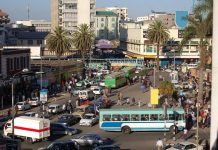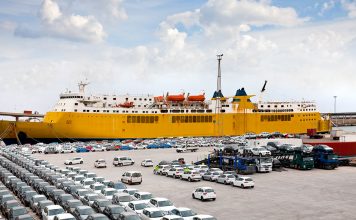•The modern oil facility will accommodate bigger vessels of up to 170,000 deadweight tonnage.
•The country is likely to save on demurrage costs to the tune of Sh0.50 per litre per month for each of the three price regulated petroleum products.
Fuel prices are expected fall with the completion of the new Kipevu Oil Terminal (KOT), according to the Energy and Petroleum Regulatory Authority (EPRA).
EPRA said demurrage charges are likely to drop as the new facility will be able to berth four vessels (three petroleum and one LPG) at once, hence save on the vessel queuing time.
Demurrage is a charge payable to the owner of a chartered ship on failure to load or discharge the ship within the agreed time.
With speedy cargo evacuation, the country will save on demurrage costs to the tune of Sh0.50 per litre per month for each of the three price regulated petroleum products, said the regulator.
“This will translate into minimal demurrage costs,” EPRA acting director general Mueni Mutung’a said in an interview with the Star.
The country will also enjoy economies of scale from use of bigger vessels.
Kenya Ports Authority latest project update indicates the new facility, being developed at a cost of Sh40 billion, is about 63.22 per cent complete, and should be ready in twelve months.
“The project is fully financed by the Kenya Ports Authority and once complete will expand our capacity to serve our increasing needs as well as the needs of our neighbouring countries that rely on Mombasa port for oil imports,” KPA management told the Star.
The modern oil facility will accommodate bigger vessels of up to 170,000-deadweight tonnage compared to one ship of 110,000 deadweight tonnage on the existing oil terminal, improving on capacity and efficiency on handling energy products.
The country has for decades depended on the old Kipevu Oil Terminal and the Shimanzi terminal near the Likoni Ferry channel to offload oil products. The two can only handle one oil tanker at a time.
“KOT is expected to handle larger vessels and more than one at the same time As a result, freight charges for vessels that will be handled at the new KOT are expected to be lower basing on the bigger vessel capacity,” Mutung’a said.
The facility will also handle more varieties of products that include LPG, crude oil or heavy fuel, aviation fuel, diesel and petrol.
It is designed to have five onshore pipelines, each dedicated to a separate oil product to existing Kenya Petroleum Refineries Limited (KPRL) and Kenya Pipeline Company tanks in Mombasa.
Its implementation commenced in February 2019.
Meanwhile, the regulator is further banking on increased fuel storage capacity by both the government and the private sector to accommodate more products, for longer periods, a move that will help manage prices based on international crude prices.
Kenya Pipeline is currently in the process of acquiring the storage tanks at the Kenya Petroleum Refineries Limited in Mombasa, with the view of increasing the import handling capacity.
There are also private petroleum storage facilities, which serve to boost the import and distribution capacity.
“The country may witness future proposals for additional storage capacity based on growth in local and regional petroleum demand,” Mutung’a said.
Monthly fuel consumption averages 75 million litres of petrol, 160 million litres of diesel and 100 million litres of kerosene.
The weighted average cost of imports for October was Sh35.65 per litre of petrol, Sh35.82 (diesel) and Sh30.61 per litre of kerosene, costs that are factored in the final retail pump prices that include storage and distribution costs, and about nine different taxes and levies.
SOURCE: the-star.co.ke







![Top 20 Used Cars to Avoid Buying in Kenya – [PHOTOS]](../../../blog/wp-content/uploads/2013/11/top-used-unreliable-cars-to-avoid2-80x60.jpg)



![Here are some of the best tuned cars in kenya by state of the art garages [PHOTOS]](../../../blog/wp-content/uploads/2013/11/29402_10151301757042065_340470732_n-e1384498044289.jpg)
![Top 20 Used Cars to Avoid Buying in Kenya – [PHOTOS]](../../../blog/wp-content/uploads/2013/11/top-used-unreliable-cars-to-avoid2-100x70.jpg)





